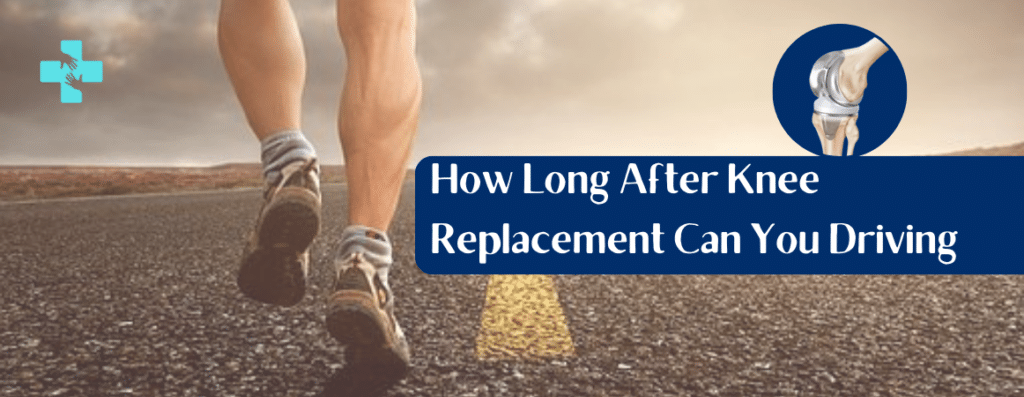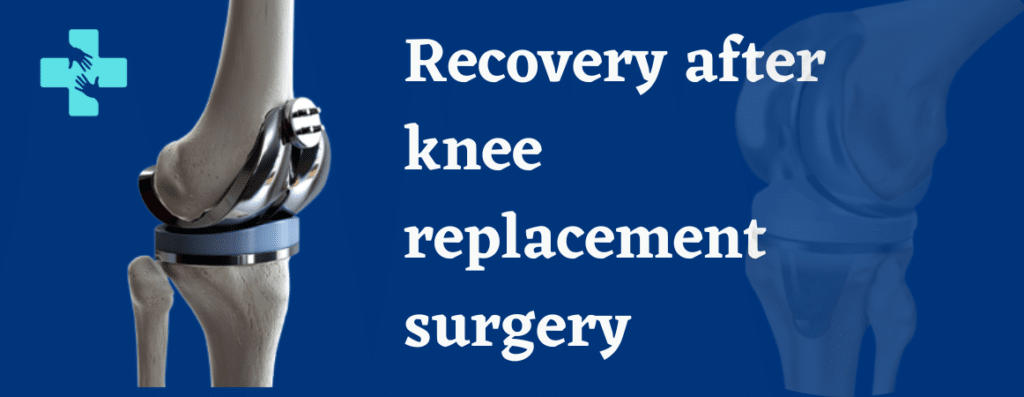
Are you one of the many patients who are eagerly waiting to get back behind the wheel after a knee replacement surgery? The good news is that you can resume driving, but the timeframe may vary depending on several factors. Knee replacement, also known as total knee arthroplasty, is a surgical procedure that involves replacing a damaged or worn-out knee joint with an artificial one. The recovery process can take several weeks, and during this time, patients may experience pain, decreased muscle strength, and limited mobility. In addition, many patients are on narcotic pain medication, which can negatively affect their response times and mental alertness.
Types of knee replacement
There are two main types of knee replacement surgery: total knee replacement (TKR) and partial knee replacement (PKR). Total knee replacement involves replacing the entire knee joint, while partial knee replacement involves replacing only the damaged parts of the knee joint. So, how long after knee replacement can you drive?
Most knee replacement patients can resume driving within four to six weeks after surgery. However, this timeframe may vary depending on several factors such as the type of knee replacement surgery (left knee or right knee replacement, total knee surgery, left total knee replacement, right total knee replacement, or right total knee arthroplasty), the strength of pre-surgical reflexes, the surgical leg (left leg or right leg), the use of pain medications, and the ability to control the foot.
Driving After Total Knee Replacement Surgery
Generally, most patients may be able to get back to driving between 2–6 weeks after surgery. During this time, patients are usually prescribed narcotic pain medication to manage the pain. These medications can cause drowsiness, slow reaction time, and negatively affect mental alertness. It is important to wait until you are off narcotic medication before getting behind the wheel of a car.
Additionally, patients may experience decreased muscle strength and response times in the surgical leg, which can affect their capability to handle the vehicle. Therefore, it is recommended to wait for at least 2–6 weeks after knee surgery before driving a car.
Driving After Total Right Knee Replacement
Driving after total right knee surgery can be challenging, especially during the early stages of healing. Most patients experience pain, swelling, and limited mobility in their surgical leg, which can make it difficult to control the car. However, it is generally safe to resume driving six weeks after surgery, provided the surgeon has cleared the patient for such activities.
When Can Knee Replacement Patients Drive?
When recovering from a total knee replacement, it can be hard for some people to give up their freedom to drive even for a short time. A big question for many patients is when they can start to drive again. Before resuming driving, it is important to consult with your surgeon to determine if you are ready. The surgeon will evaluate your progress and advise you on when it is safe to get behind the wheel.
Driving after knee replacement
Why is driving after knee replacement a concern?
Driving after knee replacement surgery is a concern because it involves using the surgical leg to operate the pedals, which requires the use of the quadriceps muscle group. These muscles are crucial for stability and control while driving. Also, narcotic pain medication commonly used after surgery can cause drowsiness, impair reflexes, and negatively affect reaction times.
How does knee replacement surgery affect driving ability?
Knee replacement surgery can affect driving ability in several ways. Pain, reduced muscle strength, and limited range of motion can make it difficult to operate the pedals, turn the steering wheel, and shift gears. Also, narcotic pain medication commonly used after surgery can affect mental alertness and reaction times.
Factors that determine when you can drive after knee replacement
The timing of when you can drive after knee replacement surgery depends on several factors, including:
- Recovery time: It takes time for the surgical leg to recover, and the muscles to regain strength and flexibility.
- Pain management: Pain can affect driving ability, so it’s important to manage pain effectively before resuming driving.
- Physical therapy: Physical therapy is crucial for regaining muscle strength, and range of motion, and improving balance and stability.
- Narcotic medication: Narcotic pain medication commonly used after surgery can cause drowsiness and negatively affect mental alertness and reaction times.
How Do I Know If I’m Ready to Return To Driving After Knee Replacement?
If you are wondering when you can return to driving after knee replacement surgery, there are a few things to keep in mind. First, you should be able to sit comfortably in the driver’s seat and reach the steering wheel and pedals without experiencing pain. You should also be able to apply the brakes quickly and effectively in case of an emergency.
Recovery after knee replacement surgery

Pain management after knee replacement surgery
Managing pain after knee replacement surgery is essential for a successful recovery. Pain medication is usually prescribed to manage pain, but it is important to note that narcotic pain medication can impair reflexes and reaction times, making it unsafe to drive. Therefore, patients should discuss pain management options with their healthcare provider and only take medication that does not affect their ability to drive.
Physical therapy after knee replacement surgery
Physical therapy is a critical aspect of the healing process after knee replacement surgery. A physical therapist will work with the patient to develop an exercise program tailored to their specific needs and goals. This program helps to improve muscle strength, range of motion, and flexibility in the surgical leg. It also helps to reduce pain and swelling and improve balance and stability.
Factors that affect the healing process after knee replacement surgery
Several factors can affect the healing process after knee replacement surgery, including age, pre-surgical condition, compliance with physical therapy, and complications such as infection or blood clots. Patients who are older or have underlying medical conditions may take longer to recover, while patients who are compliant with their physical therapy program usually have a faster recovery time.
Return to driving after knee replacement
When can you start driving after knee replacement? The timing of when a patient can start driving after knee replacement surgery depends on several factors, including recovery time, pre-surgical reflexes, muscle strength, and pain medication. Most patients can start driving again between four to six weeks after surgery, but the timing varies depending on individual recovery.
Precautions to take when driving after knee replacement
Patients should take precautions when driving after new knee surgery. Starting with an automatic transmission vehicle is recommended before driving a manual transmission vehicle. Patients should wait for the green light before accelerating to give the surgical leg time to adjust.Be sure to take extra precautions when you approach a green light as your breaking speed may be altered for several weeks after the surgery. If you do experience pain in the knee while driving, consult your surgeon immediately.
Tips for driving after knee replacement
Here are some tips for driving after knee replacement surgery:
- Use a cushion or pillow: Patients can use a cushion or pillow to elevate the surgical leg while driving to reduce pain and swelling.
- Adjust the seat and steering wheel: Patients should adjust the seat and steering wheel to ensure proper posture and reduce strain on the surgical leg.
- Take breaks: Patients should take breaks and stretch their legs during long drives to reduce pain and stiffness.
- Use public transportation: Patients who are not yet ready to drive can use public transportation or carpool with family members or friends.
Final Words
In the end, driving after knee replacement surgery is possible, but it’s crucial to wait until you’ve fully recovered and received clearance from your surgeon. Most patients can resume driving within 2–6 weeks after surgery, but this may vary depending on several factors. When you do get behind the wheel, make sure to take extra caution and be aware of any limitations that may impact your ability to drive safely.
FAQs
How Do I Know If I’m Ready to Return To Driving After Knee Replacement?
The ability to drive after knee replacement surgery varies from patient to patient and it ultimately depends on their recovery progress. Patients should wait until their pain is under control and they have regained their mobility and reflexes before getting behind the wheel. The surgeon can advise on the best time to resume driving based on the patient’s progress.
Can a Knee Replacement Patient Play Sports?
Sports medicine experts advise knee replacement patients to avoid high-impact activities such as running and jumping, as these can negatively affect the new knee. However, patients can engage in low-impact activities such as swimming, cycling, and golfing, provided their surgeon has cleared them for such activities.
When Can Knee Replacement Patients Return to Work?
After hospital discharge, patients are often eager to return to driving, which allows them to resume their social and recreational activities or even to return to work. However, patients with physically demanding jobs may require several weeks longer to fully recover and regain their strength and better mobility.
Does it make any difference if I drive an automatic?
Depending on which knee is being operated on, it may do. Most drivers of automatic cars use their right foot to operate the brake and accelerator. If you had a left knee replacement in this scenario, your recovery time could be quicker.